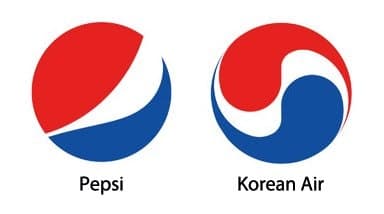In today’s fast-paced marketplace, 64% of consumers consider brand reputation and awareness when deciding what to buy. That’s because branding is more than just a logo or a catchy slogan—it’s the entire perception a consumer has of your business. A strong brand builds trust, fosters loyalty, and helps you stand out from the competition. This article will offer branding insights to help businesses understand the value and reasoning for creating strong, recognizable brands.

Defining Your Brand Identity
Understanding Your Target Audience
A deep understanding of your audience is crucial. Identify key demographics, such as age, gender, location, and income. Explore psychographics, including values, interests, and behaviors. For example, research shows that 68% of millennials prefer brands that reflect their personal values. Tailoring your strategies to fit this branding insight can elevate consumer engagement.
Crafting Your Brand Story
People love a good story. Crafting a compelling narrative that resonates with your audience can set your brand apart. Consider Nike’s “Just Do It” campaign, which tells stories of perseverance and determination. Such storytelling invites consumers to connect emotionally with the brand.
Visual Brand Elements
Visual elements are the face of your brand. A strong logo, cohesive color palette, and consistent typography reinforce your brand identity. Take Coca-Cola, for instance. Its iconic red and white colors are instantly recognizable worldwide. Ensure your visual branding is consistent across all platforms to create a unified image.
Building Brand Awareness
Leveraging Social Media Marketing
Social media is a powerful tool for brand awareness. Create engaging content that encourages interaction with your audience. Statistics reveal that 5.22 billion people use social media worldwide, accounting for 63.8% of the world’s population. By effectively using these platforms, you can significantly extend your brand’s reach.
Content Marketing Strategies
Content marketing builds authority and trust. Blog posts, videos, infographics, and articles can all contribute to your brand’s identity. For example, Red Bull excels at content marketing, creating extreme sports events and captivating videos that align with its energetic brand.
Public Relations and Media Outreach
Good relationships with media outlets can boost your brand visibility. Issuing press releases, providing media kits, and collaborating with influencers can enhance your outreach. As PR expert John Doe says, “Media relations can significantly influence public perception.”
Maintaining Brand Consistency
Brand Guidelines and Style Guides
One of the many branding insights that I provide for companies is evaluating their brand consistency. Creating brand guidelines ensures consistency across all platforms. This document should outline color schemes, logo usage, tone of voice, and other essential elements. It can even go as far as to pick furniture, paint colors, carpeting. Consistency helps reinforce brand recognition and trust.
Monitoring Brand Reputation
Reputation management is vital. Monitor online mentions of your brand and quickly address negative feedback. Studies show that 90% of consumers read online reviews before making purchasing decisions. A proactive approach can improve your overall brand perception.
Adapting to Changing Consumer Trends
Consumer preferences shift over time. Brands must be willing to adapt to stay relevant. For example, consider how many brands embraced sustainability to resonate with eco-conscious consumers. Regularly revisiting your brand strategy will help you remain in tune with your audience.
Measuring Brand Performance
Key Performance Indicators (KPIs)
To assess brand performance, track relevant metrics. Focus on brand awareness, customer engagement, and loyalty. Creating a solid set of KPIs will guide your branding efforts.
Data Analytics and Reporting
Use data analytics to inform branding strategies. Analyzing trends and consumer feedback can provide valuable insights into how your brand is perceived. Regularly review these metrics to refine your approach.
A/B Testing and Optimization
Conduct A/B testing on everything from messages, calls to action, visuals can give you a lot of branding insights. Testing helps identify what resonates best with your audience. This iterative process can significantly improve brand effectiveness and help you refine your brand.
Case Studies of Successful Branding
Example 1: Nike

Nike exemplifies successful branding through its strong identity and relatable storytelling. Their campaigns often focus on empowerment and perseverance, encouraging consumers to embrace their athletic potential. The “Just Do It” slogan has become synonymous with motivation and determination.
Example 2: Dove

Dove’s “Real Beauty” campaign disrupted industry standards by promoting body positivity. The brand’s alignment with self-esteem and authenticity resonated deeply with consumers. This strategy not only boosted awareness but also cultivated a loyal customer base.
Branding Insights from Case Studies
Successful brands share common strategies:
- An understanding of consumer values and preferences.
- Compelling storytelling that connects emotionally.
- Strong visual branding that remains consistent.
Conclusion
Building a strong brand identity is essential for business success. Understanding your audience, crafting a unique narrative, and maintaining consistency are key elements of branding. Monitoring performance and adapting to changes will further strengthen your brand. Now is the time to implement these strategies and unlock your brand’s full potential. Embrace the power of branding today!


